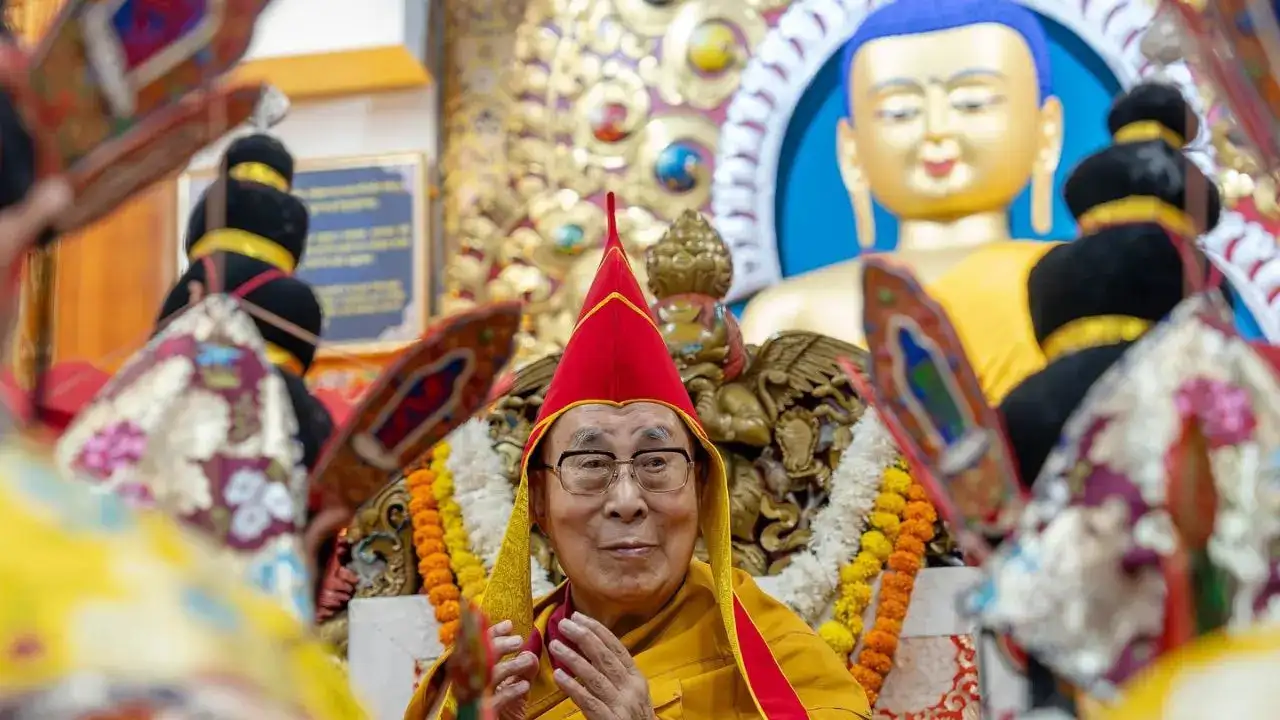By Namya Sinha
On 17 March 1959, the 14th Dalai Lama fled Tibet to escape Chinese persecution. The Himalayan town of Dharamshala in India became his home in exile. One of the most influential spiritual figures in the world, the Dalai Lama, Tenzin Gyatso, turns 90 today. According to his official website, “The Dalai Lamas are believed by Tibetan Buddhists to be manifestations of Avalokiteshvara or Chenrezig, the Bodhisattva of Compassion and the patron saint of Tibet. Bodhisattvas are realised beings, inspired by the wish to attain complete enlightenment, who have vowed to be reborn in the world to help all living beings.” While it is widely assumed that the 14th Dalai Lama is the head of Tibetan Buddhism as a whole, this is a common misconception. In truth, he is the spiritual leader of the Gelug (or Geluk) school, one of the four main traditions within Tibetan Buddhism. According to the Tibetan Nuns Project, these four schools are: Nyingma (founded in the 8th century), Kagyu (founded in the early 11th century), Sakya (founded in 1073), and Gelug (founded in 1409). Within the Gelug tradition, the second highest lama is the Panchen Lama. The Gelug Tradition of Tibetan Buddhism Also referred to as the Geden tradition, the Gelugpa School was established in the 14th century by the revered Buddhist master and scholar, Je Tsongkhapa. The Stanford Encyclopedia of Philosophy explains: “The Gelukpa (or Geluk) tradition of Tibetan Buddhist philosophy is inspired by the works of Tsongkhapa (1357–1419), who set out a distinctly nominalist Buddhist tradition that differs sharply from other forms of Buddhist thought not only in Tibet, but elsewhere in the Buddhist world. The negative dialectics of the Middle Way (madhyamaka) is the centrepiece of the Geluk intellectual tradition and is the philosophy that is commonly held in Tibet to represent the highest view.” Tibetan Buddhism places strong emphasis on the preservation of lineage. It is believed that an unbroken line of authentic transmission carries the “undiluted blessing from the Buddha himself.” Maintaining the purity of these teachings is seen as vital for the attainment and realisation of Buddhahood. Unfortunately, since 1959, as Tibetans have settled in exile around the globe, many precious teachings have been lost due to disrupted transmission. “This process continues as older Tibetan lamas pass away, without having properly transmitted the teachings they hold to the younger generation,” notes the website Lelung.org. Je Tsongkhapa’s philosophical and spiritual legacy is traditionally divided into two parts. The first, known in Tibetan as Phacho or “Teachings of the Fathers”, includes his own collected works and those of his two principal disciples. The second, Bhucho or “Teachings of the Sons”, comprises writings by their direct students, subsequent followers, and commentaries by Indian Buddhist scholars.
